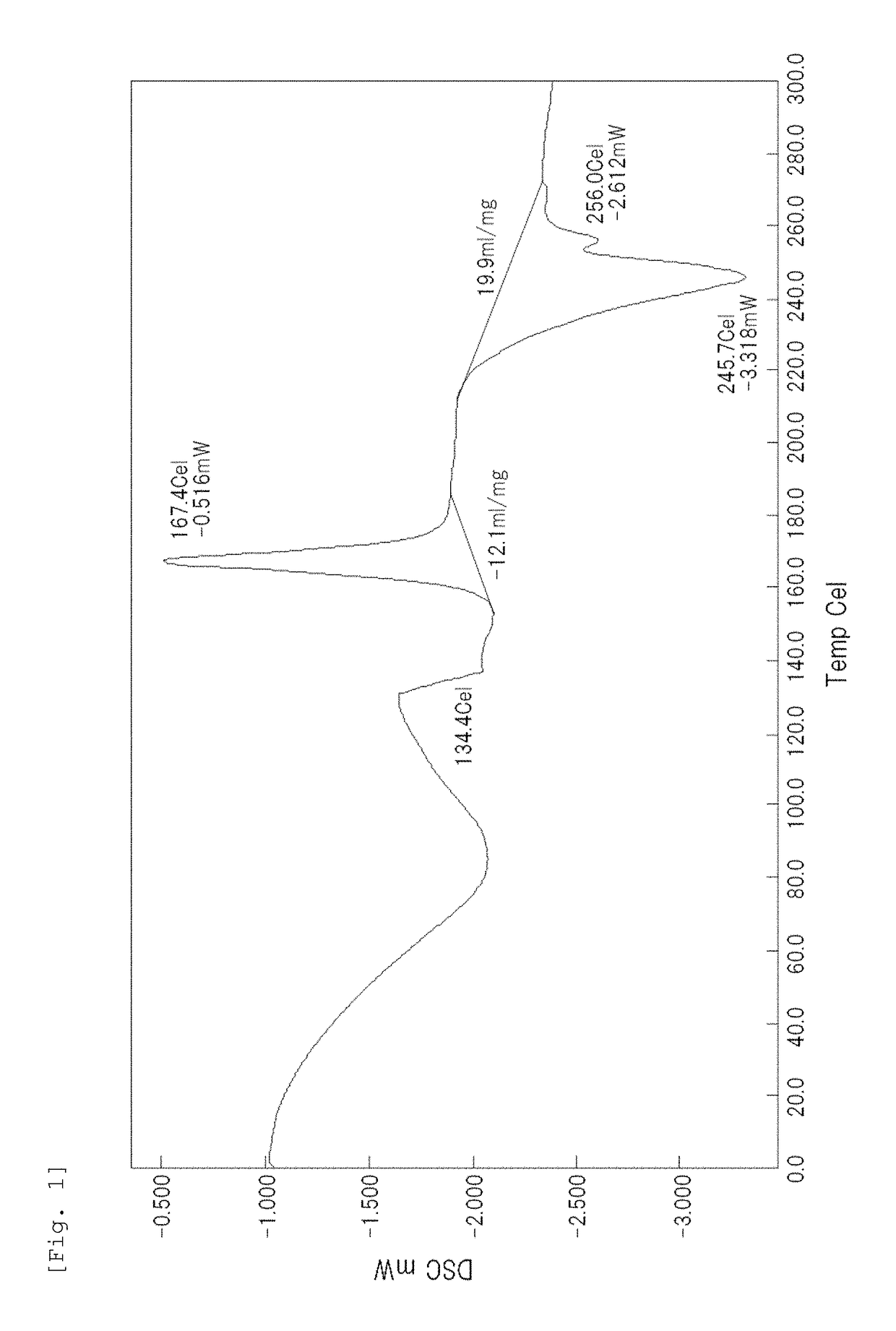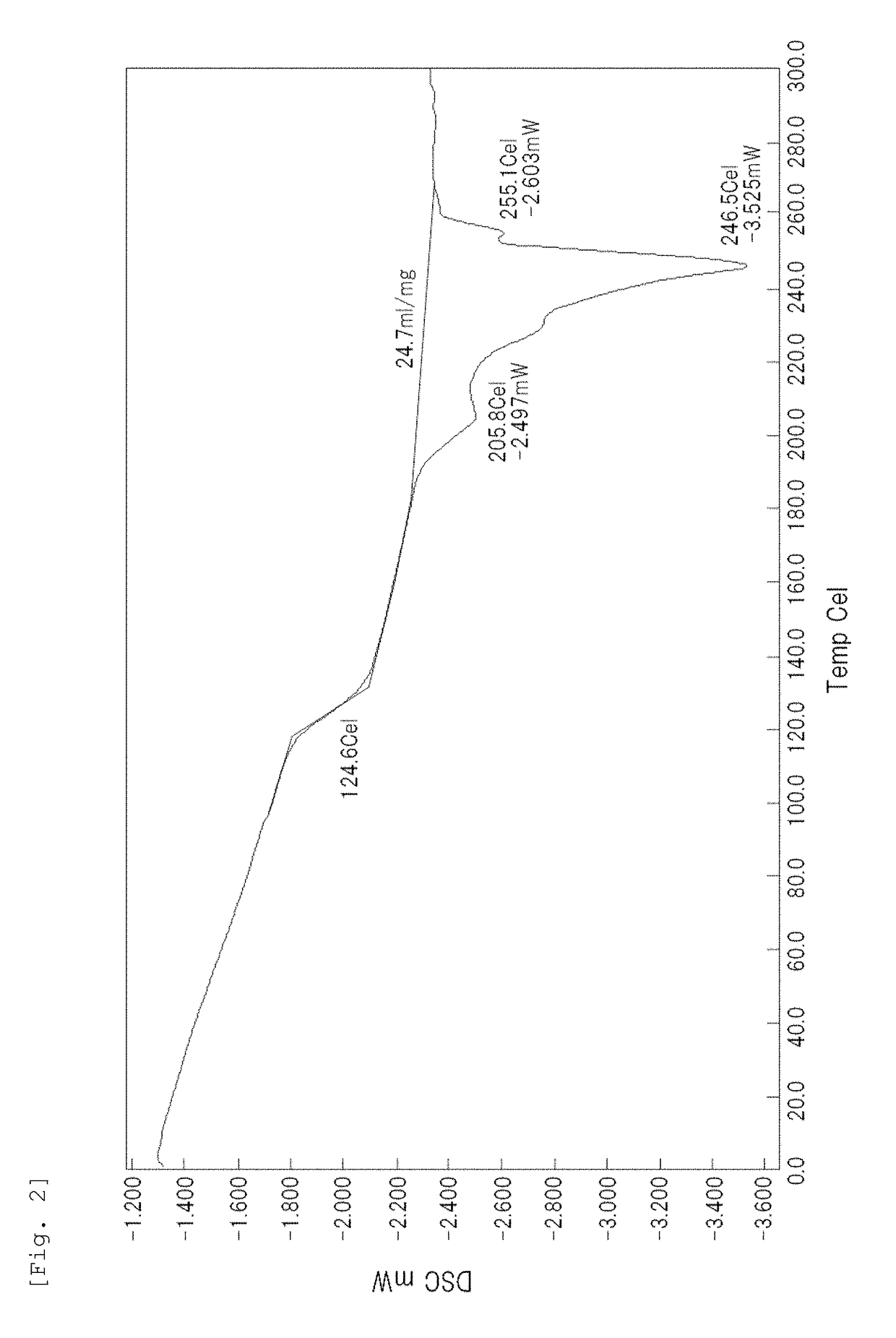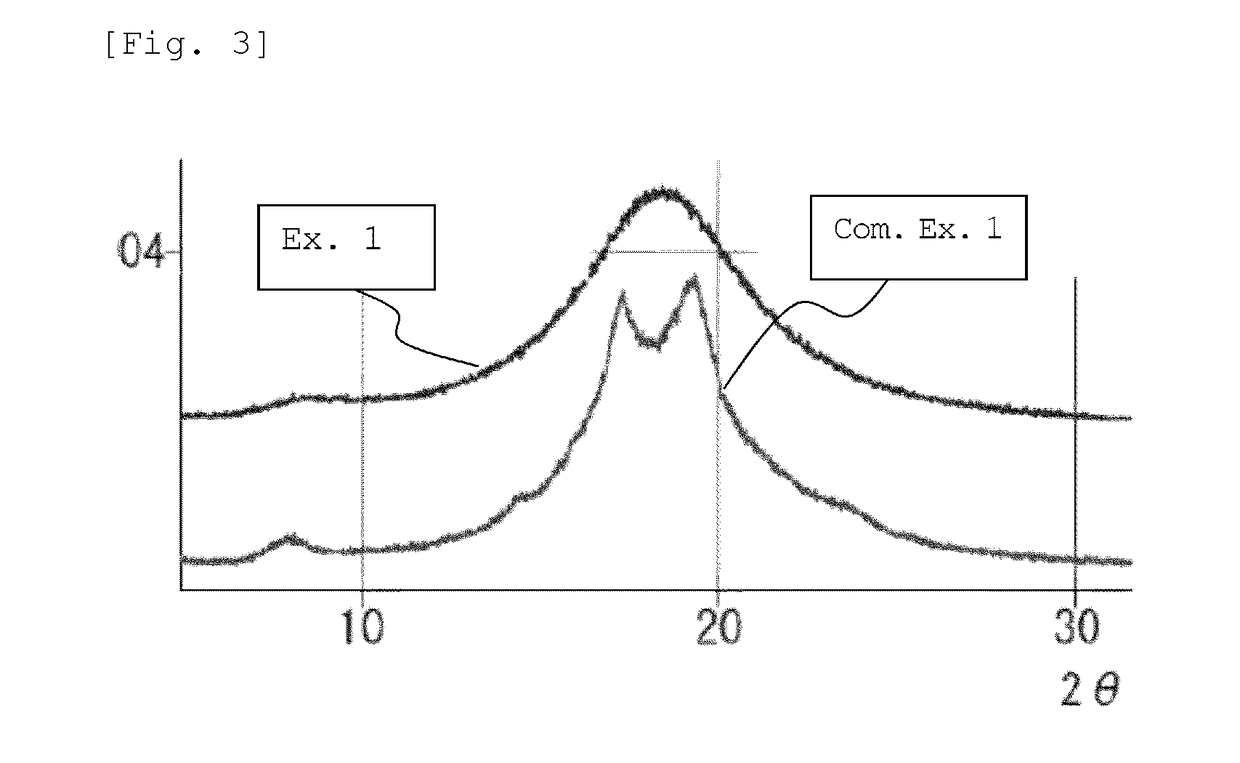Fiber-reinforced resin, process for producing same, and molded article
a fiber reinforced resin and fiber reinforcement technology, applied in the field of fiber reinforced resin, can solve the problems of difficult handling and insufficient improvement of the reinforcing effect of polyamide particles, and achieve the effects of improving the interlaminar toughness of the cfrp, improving the reinforcing effect, and easy handling
- Summary
- Abstract
- Description
- Claims
- Application Information
AI Technical Summary
Benefits of technology
Problems solved by technology
Method used
Image
Examples
example 1
[0148](Production of Resin Particle)
[0149]The alicyclic PA was shaped into a fine particulate form by forced emulsification using a poly(ethylene glycol) in accordance with Examples of Japanese Patent Application Laid-Open Publication No. 2010-132811. A melt-kneaded product containing an alicyclic PS and a poly(ethylene glycol) extruded from a die of an extruder was forcibly cooled by a spot cooler and then washed with water for removal of only the poly(ethylene glycol). The washed product was dried at a temperature of 120° C. for 24 hours under a reduced pressure to give a resin particle (powder). The resin particle had an average particle size of 21 μm and had a crystallization peak observed under a heating condition of 10° C. / min. by DSC. The DSC chart (heat absorption curve) is shown in FIG. 1. As apparent from FIG. 1, a high peak by crystallization is observed around 170° C., and the degree of crystallinity is also low. The results show that the obtained particle has a low crys...
example 2
[0160]A test piece was produced in the same manner as Example 1 except for the following: in the production of the resin particle, the PA12 and a saccharide were used instead of the alicyclic PA and the poly(ethylene glycol), the melt-kneaded product was allowed to cool without using the spot cooler, and after removal of the saccharide the resulting product was dried by heating at 80° C. for 3 hours without drying under a reduced pressure. The resin particle had an average particle size of 20 μm and had a crystallization peak observed under a heating condition of 10° C. / min. by DSC. The DSC chart (heat absorption curve) is shown in FIG. 4. As apparent from FIG. 4, a peak by crystallization is observed around 170° C. FIG. 5 is a wide-angle X-ray diffraction chart. As apparent from FIG. 5, the X-ray spectrum of the obtained PA12 particle has one peak at 20 of 21.5°, which shows that the PA12 particle has a γ-type crystal structure.
example 3
[0162]A test piece was produced in the same manner as Example 1 except for the following: in the production of the resin particle, the PA1010 and a saccharide were used instead of the alicyclic PA and the poly(ethylene glycol), the melt-kneaded product was allowed to cool without using the spot cooler, and after removal of the saccharide the resulting product was dried by heating at 80° C. for 3 hours without drying under a reduced pressure. The resin particle had an average particle size of 22 μm and had a crystallization peak observed under a heating condition of 10° C. / min. by DSC. FIG. 8 is a wide-angle X-ray diffraction chart. As apparent from FIG. 8, the X-ray spectrum of the PA1010 particle obtained in Example 3 has two peaks at 20 of 20.4° and 20 of 23.6°, which shows that the PA1010 particle has an α-type crystal structure.
PUM
| Property | Measurement | Unit |
|---|---|---|
| particle size | aaaaa | aaaaa |
| melting point | aaaaa | aaaaa |
| glass transition temperature | aaaaa | aaaaa |
Abstract
Description
Claims
Application Information
 Login to View More
Login to View More - R&D
- Intellectual Property
- Life Sciences
- Materials
- Tech Scout
- Unparalleled Data Quality
- Higher Quality Content
- 60% Fewer Hallucinations
Browse by: Latest US Patents, China's latest patents, Technical Efficacy Thesaurus, Application Domain, Technology Topic, Popular Technical Reports.
© 2025 PatSnap. All rights reserved.Legal|Privacy policy|Modern Slavery Act Transparency Statement|Sitemap|About US| Contact US: help@patsnap.com



